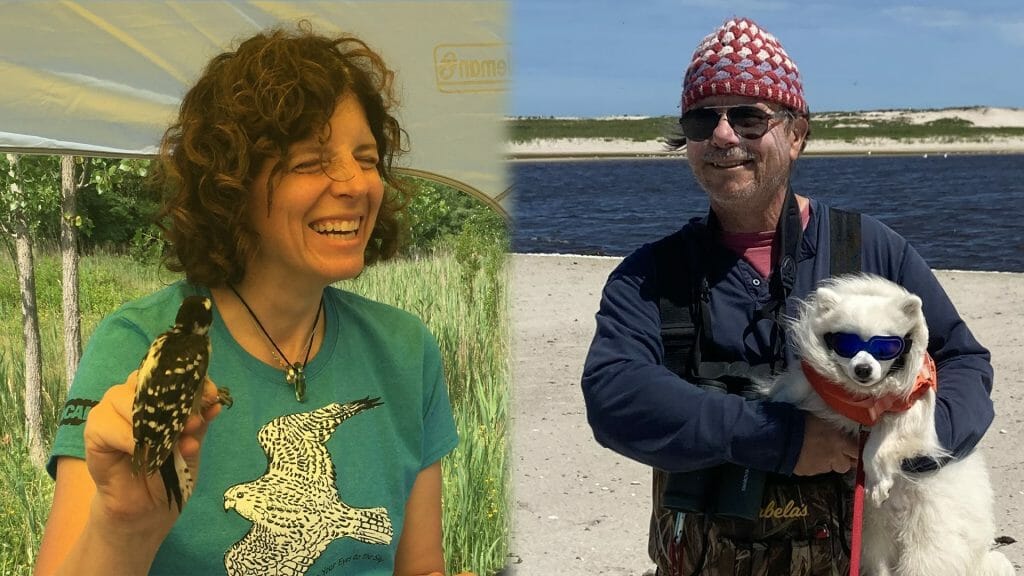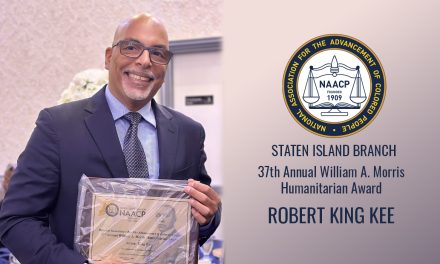
Professor Richard Veit and Associate Professor Lisa Manne of the CSI Department of Biology have recently received two grants for $738,511 and $53,575 from the National Science Foundation to study the ecology and behavior of birds. The former research project is titled “Climate, Changing Abundance and Species: Interactions of Marine Birds and Mammals at South Georgia in Winter” (also including Jarod Santora, Biologist at NOAA, Santa Cruz, CA; PhD in Ecology and Evolutionary Biology from CSI/CUNY 2007) and the latter’s title is “Vagrancy and Colonization by Birds: Escape from Climate Extinction?”
Commenting on how it feels to receive these grants Dr. Veit said, “Well first, for Antarctic work, one HAS to have a grant to even get there, just because of the remoteness of the sites, the expense and necessity for permits. Second, about NSF grants in particular, they are evaluated by a large number of (international) scientists, so getting a grant awarded is a validation of one’s work. And, of course, it is very exciting to get to travel to the Antarctic and experience the wildlife there. The Vagrant grant is especially gratifying because I am quite sure this is the first award to anyone, ever, to explicitly study “vagrancy” as a legitimate biological process, rather than just a game of “listing” by bird watchers who are interested in listing large numbers of rare birds. Vagrancy is, as we have shown, a critically important component of birds’ (and most other organisms’) lives, and will importantly contribute to how they respond to changing climate.”
Dr. Manne added, “For any scientist, they have trained for quite some time to achieve their current employment status (so, we’re all pretty good at what we do). And we are all convinced that our area of specialization is important and interesting. It is really great to have that (important, interesting) feeling reinforced by NSF. These grants are incredibly hard to get; the field is so competitive.”
As for the research, Veit explained that the vagrancy study will involve the placement of approximately 70 ICARUS GPS satellite transmitters on Lesser Black-backed gulls, which are European birds that have gradually colonized North American through a process known as vagrancy, where a bird shows up in an area outside of its normal range. “We will place trackers on the birds, and then be able to follow them, wherever on Earth (literally) they travel, as the transmitters have solar cells and download data directly to the satellites. We will study whether, as we expect, they will go to Greenland to breed, and also the variation in distance travelled by the birds. We predict they will move in many directions, as they are engaged in a process of exploration,” Veit noted.
Commenting on the importance of this work, Dr. Manne said, ”This work is very important because for the longest time, birds that disperse long distances, in unexpected directions, were considered ‘lost’ or ‘blown off course’, or genetically aberrant. We are hypothesizing that long distance dispersal is a natural process. (SOMEONE has to disperse the farthest….there will always be a few individuals who go far or go in a different direction. This phenomenon might be necessary for bird species to colonize new environments, and might be crucial for species to persist in a world of dwindling natural habitat patches. So, we are assessing if it is natural that birds explore, using lesser black-backed gull as a model species.”
The other study will take place in South Georgia, which is about 1,000 miles east of the southern end of South America. Veit stated that “we are asking whether changing sea temperatures down there are influencing the species composition of birds. Seabirds use each other as cues to the presence of food (for example, flying birds follow penguins because penguins tend to find prey faster because they dive deeper), so if penguins decrease in abundance, then flying birds that use them as cues will likely decline as well. These linked declines are likely to generate what we call ‘nonlinear effects,’ that is, much steeper declines than would be expected just given a simple decline in proportion to decline in prey abundance.”
“Both of our labs look at how changing climate impacts species distributions, and community composition, Manne explained. “And just because the Antarctic is typically cold, doesn’t mean that it is immune to changes in climate. Species distributions are changing there as well, and we have the great advantage of being able to compare to earlier data, to document these climate changes.”
In this particular study, Veit said that CSI students will join them in the field. Two cruises are scheduled, one in June 2022 and another for June 2023. So far, a tentative crew list for the 2022 trip includes:
-Samantha Monier, PhD student in Ecology and Evolutionary Biology at CSI/CUNY
-Marlen Acosta, PhD student in Ecology and Evolutionary Biology at CSI/CUNY
-Danielle Fibikar, MS in Biology from CSI
-Jarrod Santora ‘07
This isn’t the first time that CSI students have had this rare opportunity to study in this region, as they went on cruises to Antarctica in 2001 and 2003 on another NSF-funded project.
For more information on these two areas of research, see:
By Terry Mares















